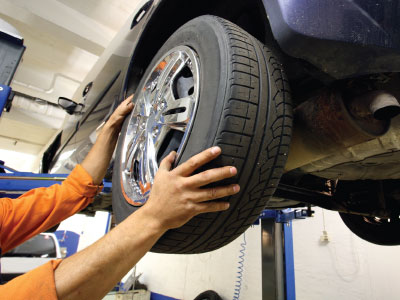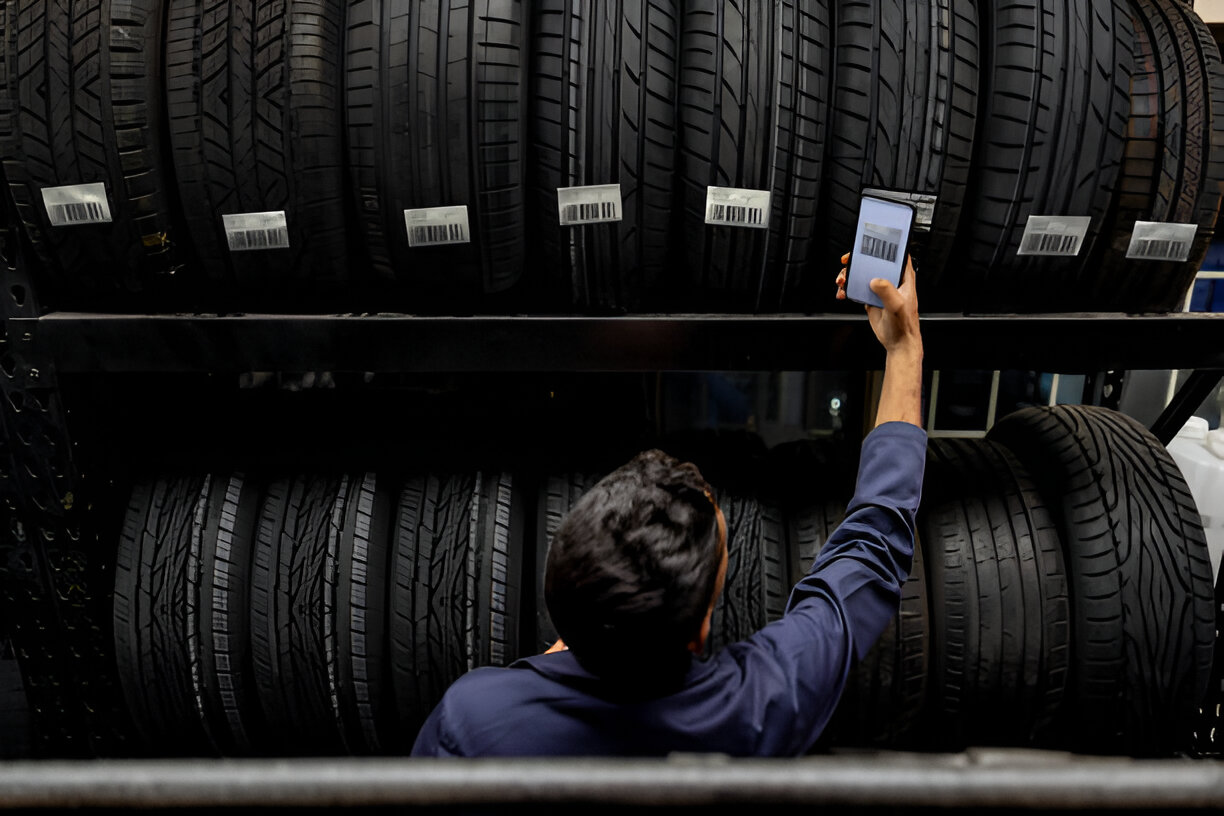Last Updated on August 2, 2024
The Definitive Guide to Effective Tire Rotation Techniques
When it comes to maintaining your vehicle, one often overlooked but crucial aspect is tire rotation. Proper tire rotation can significantly extend the lifespan of your tires and enhance your vehicle’s performance. This comprehensive guide will delve into the tire rotation’s ins and outs, providing valuable insights, tips, and expert advice to keep your tires in top shape.
What is a Tire Rotation?
Tire rotation is the process of periodically changing the position of the tires on a vehicle. The primary purpose of tire rotation is to ensure that each tire wears evenly over time. Since different tires on a vehicle can wear at different rates depending on their position and the driving conditions, rotating the tires helps distribute the wear more evenly.
Why Is Tire Rotation Important?
Tire rotation involves periodically changing the position of your vehicle’s tires. The primary purpose of this process is to ensure that each tire wears evenly over time. Here’s why it’s so crucial:
This practice is essential for several reasons:
- Balanced Wear: Tires are worn differently based on their position in the vehicle. For example, front tires usually wear out faster than rear tires due to factors like steering and braking. Uneven wear can lead to reduced tire lifespan and compromised safety.
- Improved Handling: Properly rotated tires improve handling and traction, especially during adverse weather conditions. This can significantly affect a vehicle’s overall performance and safety.
- Increased Fuel Efficiency: Unevenly worn tires can decrease fuel efficiency. Regularly rotating the tires can help maintain optimal gas mileage.
When Should You Rotate Your Tires?
The tire rotation frequency depends on several factors, including your vehicle type, driving habits, and the type of tires you use. As a general guideline:
- Every 6,000 to 8,000 Miles: Most vehicles benefit from tire rotation every 6,000 to 8,000 miles. Check your vehicle’s owner’s manual for manufacturer recommendations.
- Regularly Inspect Tread Wear: Pay attention to the wear patterns on your tires. If you notice uneven wear, it may be time for rotation sooner than the recommended mileage.
Tire Rotation Patterns
There are different rotation patterns, including:
- Forward Cross: This pattern involves moving the front tires straight back and crossing the rear tires to the front. It’s suitable for front-wheel-drive vehicles.
- Rearward Cross: The opposite of the forward cross, this pattern is ideal for rear-wheel-drive vehicles.
- X-Pattern: The front and rear tires crisscross to a different position in this pattern. It’s common for all-wheel-drive and four-wheel-drive vehicles.

Maximizing Tire Lifespan:
The Importance of Regular Tire Rotation
The frequency of tire rotation depends on various factors, including the type of vehicle, driving habits, and the type of tires used. Typically, most vehicles benefit from tire rotation every 6,000 to 8,000 miles. However, it’s essential to consult your vehicle’s owner’s manual for manufacturer recommendations or to inspect tread wear regularly.
Maybe that’s not news to you when you think about it, but after thousands of miles of driving, your tires wear differently from front to rear and left to right. That’s why the Rubber Manufacturer’s Association recommends tire rotation and promotes education about it during National Tire Safety Week.
Rotating your tires regularly will mainly extend their life. Your vehicle owner’s manual will specify how often you should rotate them. The general rule is about every 5,000 miles, and you should have your tires rotated and inspected during other maintenance activities like oil changes or brake replacement.
These days, many mid- to high-range vehicles come equipped with high-performance tires, which are worn differently than the tires on your sedan. So check the manual; any details important to properly maintaining your wheels and tires will be specified.
Optimizing Tire Performance: The Ins and Outs of Proper Tire Rotation
It’s also important to understand the type of rotation your tires require. For example, a vehicle would rotate tires front to back if the tires are asymmetrical or unidirectional; however, a car with staggered wheels, where the front and back tires are two different sizes, would rotate side-to-side, not front to back.
If you’ve ever changed the oil in your car, this is probably a maintenance step you can perform yourself. However, $20 bucks or less will get the job done in faster order and with much less hassle. If you have a good mechanic, they will usually do this for no charge if you are doing other work (especially if the work requires the tires to come off anyway…).
Tire technology changes yearly, and making a tire purchase is an investment. By rotating your tires regularly, you will help maximize their life; when the need to replace them arises, you will be able to buy four tires simultaneously, giving you access to the latest technology instead of trying to match the older tires on your vehicle to replace the ones that prematurely wore out or, worse, failed.
There are also great deals from manufacturers when purchasing four new tires, so if you take proper care of your tires over time, you’ll save time and money in more ways than one.
DIY or Professional Service?
While some car enthusiasts prefer to rotate their tires, many opt for professional service. Professional technicians have the expertise and equipment to perform precise rotations, ensuring optimal results.
Conclusion
Tire rotation is a simple yet effective way to maximize the lifespan of your tires and maintain your vehicle’s performance. By following the recommended rotation patterns and scheduling rotations at appropriate intervals, you can save money on tire replacement and enjoy a safer, smoother ride.
Don’t wait until your tires show uneven wear or reduced performance. Take proactive steps to ensure your tires are rotated regularly, and you’ll reap the benefits of prolonged tire life, improved handling, and better fuel efficiency.
Ready to Rotate Your Tires?
Tires Easy covers you if it’s time for your tire rotation or need new tires. Browse our wide selection of high-quality tires and experience the convenience of purchasing online. Keep your vehicle safe and performing at its best—buy your tires from Tires Easy today!
FAQs
What is a tire rotation?
Tire rotation is changing the position of your vehicle’s tires to ensure even wear and prolong their lifespan. Typically, this involves moving the front tires to the rear and vice versa or rotating them diagonally.
Do you need to rotate your tires?
Yes, tire rotation is essential for maintaining even tire wear. Without regular rotation, tires can wear unevenly, leading to reduced traction, handling issues, and the need for premature replacement.
How often should you rotate tires?
Tire rotation frequency depends on various factors, including vehicle type and driving habits. As a general guideline, it is recommended that you rotate your tires every 6,000 to 8,000 miles. However, consult your vehicle’s owner’s manual for specific recommendations.
What is tire rotation, and why is it done?
Tire rotation is changing the position of your vehicle’s tires to ensure they wear evenly. It maximizes tire lifespan, improves vehicle stability, and maintains optimal handling and traction on the road.
-
Writer










